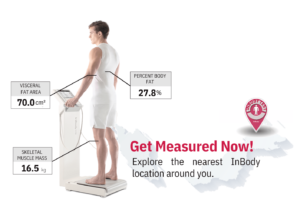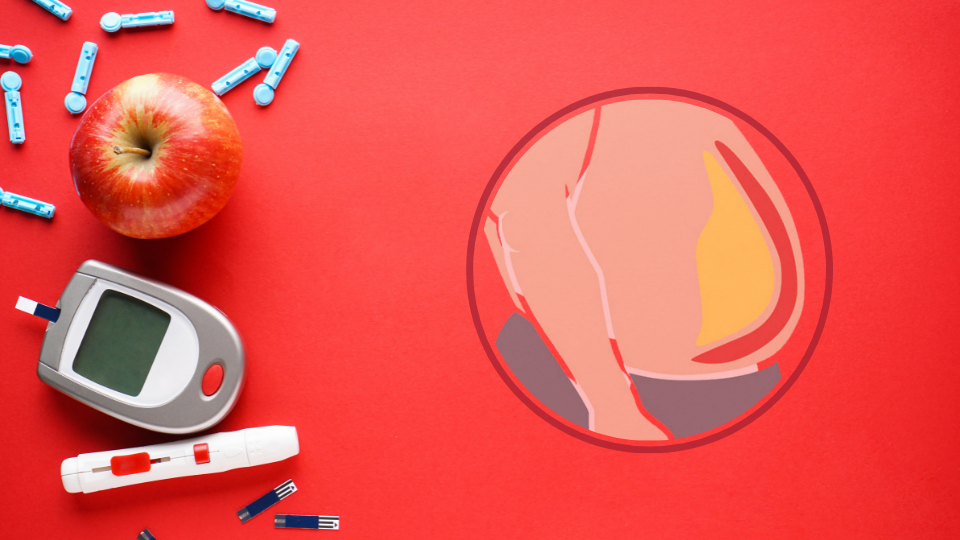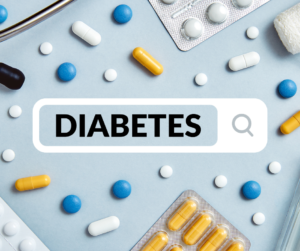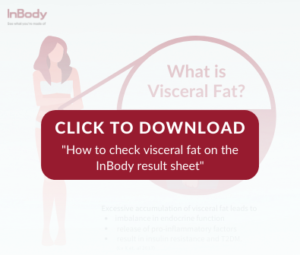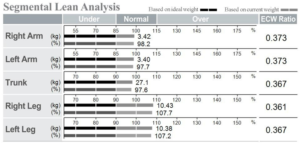
Are you trying to lose weight but not seeing the results you want on the scale? It’s time to take a closer look at your body composition and learn how to measure body fat.
This comprehensive guide provides an overview of various methods for measuring body fat percentage. One of the most precise and convenient options is using InBody devices. By understanding your body fat percentage and tracking changes over time, you can get a clearer picture of your progress and make more informed decisions about your health and fitness goals.
Although InBody’s advanced technology offers one of the most precise measurements available today, it’s worth examining the pros and cons of other methods as well.
1. Body Mass Index (BMI):
Many people believe that measuring body fat can be achieved by measuring their body weight alone. However, they may not realize that fluctuations in body weight may not directly reflect changes in body fat.
While BMI is a commonly used tool that provides an estimate of body fatness based on height and weight, it may not be the most accurate gauge for everyone as it can’t differentiate between weight from fat and weight from muscle.
- What it is: BMI provides an estimate of body fatness for most people using body weight and height.
- The formula for BMI is: BMI = weight (kg) / height (m)^2
- Limitation: It doesn’t differentiate between fat weight and muscle weight.

2. Skinfold Calipers:
This manual method measures the thickness of skinfolds at specific body sites. The results can estimate body fat percentage. However, the accuracy varies based on the skill of the person administering the test. While it’s cost-effective, it’s essential to get measurements from a trained professional.

- What it is: This method measures the thickness of skinfolds at specific body locations and uses a specific formula to calculate the body fat of the subject.
- Limitation: Accuracy can be highly impacted by the administrator’s skill.
3. Bioelectrical Impedance Analysis (BIA):
This method, used by InBody devices, sends a small electrical current through the body. By measuring resistance due to fat and lean tissues’ differing conductive properties, the device provides your body fat percentage.
Modern tools like those from InBody have fine-tuned this technology, offering detailed and accurate results. Remember, hydration level and meal timing can impact results, so consistency in test conditions is crucial.
- What it is: Devices like InBody send a mild electrical current through the body. By assessing resistance, the InBody device estimates body fat percentage.
- Advantage: InBody offers more consistent and precise results due to its advanced BIA technology.

4. Hydrostatic Weighing:
Also known as underwater weighing, this method submerges you in water to compare weights. Due to the difference in density between fat and other tissues, this method can provide a precise estimate of body fat percentage. However, it requires specialized equipment and is not as easily accessible.

Image source: www.verywellfit.com
- What it is: This method submerges you in water to compare your underwater weight to your weight outside of water.
- Limitation: This method can be expensive and is not suitable for all patients, as it requires submersion in water and specialized equipment.
5. Air Displacement Plethysmography (Bod Pod):
This innovative method measures body volume by assessing the amount of air displaced in a chamber. While offering a detailed picture of body composition, it can be on the pricier side and necessitate specialized equipment.
- What it is: Measures body volume by determining how much air is displaced when you’re in a chamber.
- Limitation: Can be expensive and requires specialized equipment.

6. Dual-Energy X-ray Absorptiometry (DEXA Scan):
A DEXA scan is considered one of the gold standards for providing information on fat distribution, lean tissue, and bone mineral density. It is mostly found in hospitals to test for bone mass and bone health, and to assess the risk of osteoporosis. However, due to the high cost and specialized equipment required, its widespread use is limited.
- What it is: One of the gold standards in body fat measurement uses X-rays to measure lean tissue, fat mass, and bone mineral density.
- Limitation: It is more expensive and requires specific equipment, with the risk of exposure to radiation.

Image source: https://www.cdc.gov/
7. Others:
While the methods mentioned above are among the most popular, there are other techniques available, such as near-infrared interaction, ultrasonography, MRI, and CT scans. However, these resources vary in accuracy and application, and are not easily accessible to every individual.
Why Choose InBody for Measuring Body Fat:
Among all the methods discussed, Bioelectrical Impedance Analysis (BIA) stands out, especially when considering the advancements InBody has made in the technology. Not only does it provide an accurate measurement of body fat, but it also delivers other valuable metrics like skeletal muscle mass and total body water.
InBody devices offer a non-invasive, quick, and reliable answer to the question of how to measure body fat. With consistency in measurement conditions, you can track changes over time, aiding in monitoring your health and progress.
How to use InBody to measure body fat?
The InBody line of devices utilizes Bioelectrical Impedance Analysis (BIA) to assess body composition, which includes measurements such as percent body fat, skeletal muscle mass, and more. Percent Body Fat (PBF) is one of the key measurements provided by these devices.
Percent Body Fat (PBF), in the context of InBody and other body composition analyses, refers to the proportion of your total weight that is fat. Specifically, it can be calculated using the following formulas:
PBF = (Total Fat Mass / Total Body Weight) x 100
For instance, if your weight is 68 kilograms and 14 kilograms of that weight is fat, then your PBF would be:
PBF = (14 kg / 68 kg) x 100 = 20.6%
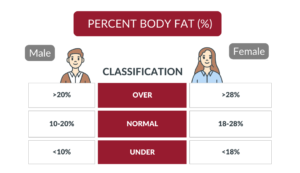
In InBody, it is considered normal for males to have a body fat percentage of 10-20% and for females to have a body fat percentage of 18-28%. However, we do not recommend that you compare your body fat measurements from other devices or methods to our normal range, as their normal range may differ due to different formulas and methods used.
When using devices like InBody, it’s important to ensure that the test is administered under consistent conditions to get the most accurate and comparable results over time. For instance, hydration status, meal timing, and recent exercise can all influence BIA readings, so it’s beneficial to measure under similar circumstances each time.
Conclusion:
Understanding how to measure body fat is vital for anyone serious about health and fitness. It provides a clearer picture than weight alone. While there are multiple methods available, devices like InBody offer the perfect balance of precision, convenience, and comprehensive data. By investing in understanding your body composition, you’re taking a significant step towards a healthier you.


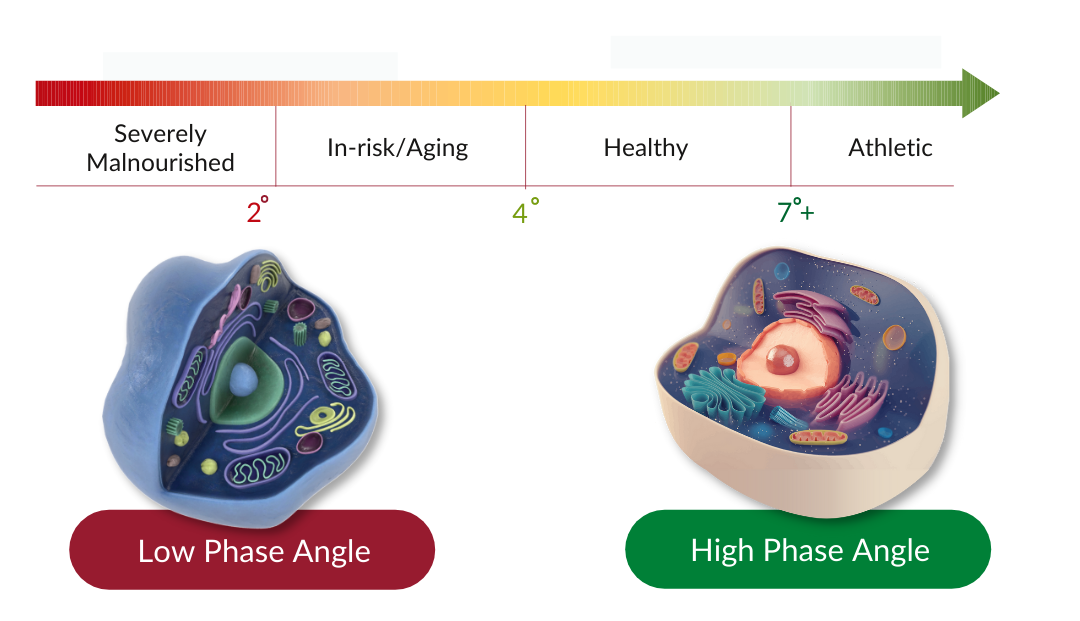


 Phase Angle results aren’t standalone figures. They are best interpreted by comparing them with reference values. A higher Phase Angle compared to the average population (>50th percentile) usually means you have healthier cell status and body composition.
Phase Angle results aren’t standalone figures. They are best interpreted by comparing them with reference values. A higher Phase Angle compared to the average population (>50th percentile) usually means you have healthier cell status and body composition.






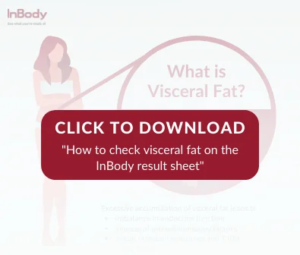


 For the body composition analysis, Farmasi Chong Alma understands the importance of providing their community with more accurate and insightful health assessments, and delightfully, they have chosen InBody, a body composition analyzer that can precisely measure their customers’ body composition and help their nutritionists and dietitians to identify any underlying health risk of their customers.
For the body composition analysis, Farmasi Chong Alma understands the importance of providing their community with more accurate and insightful health assessments, and delightfully, they have chosen InBody, a body composition analyzer that can precisely measure their customers’ body composition and help their nutritionists and dietitians to identify any underlying health risk of their customers.










 According to the image above, which is part of the sample printed result sheet, this normal weight child has a higher Body Fat Mass than the normal range according to the child’s gender and height.
According to the image above, which is part of the sample printed result sheet, this normal weight child has a higher Body Fat Mass than the normal range according to the child’s gender and height.